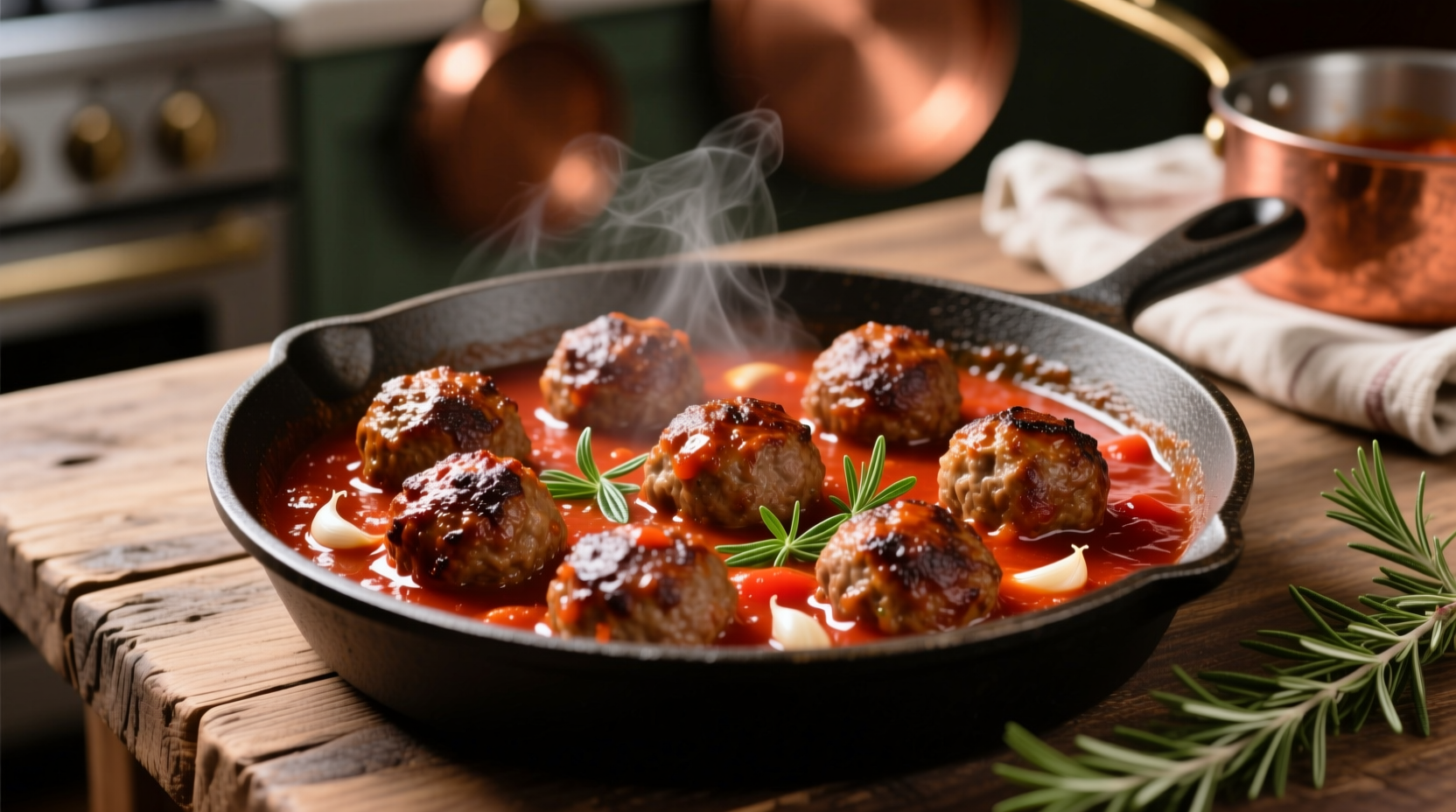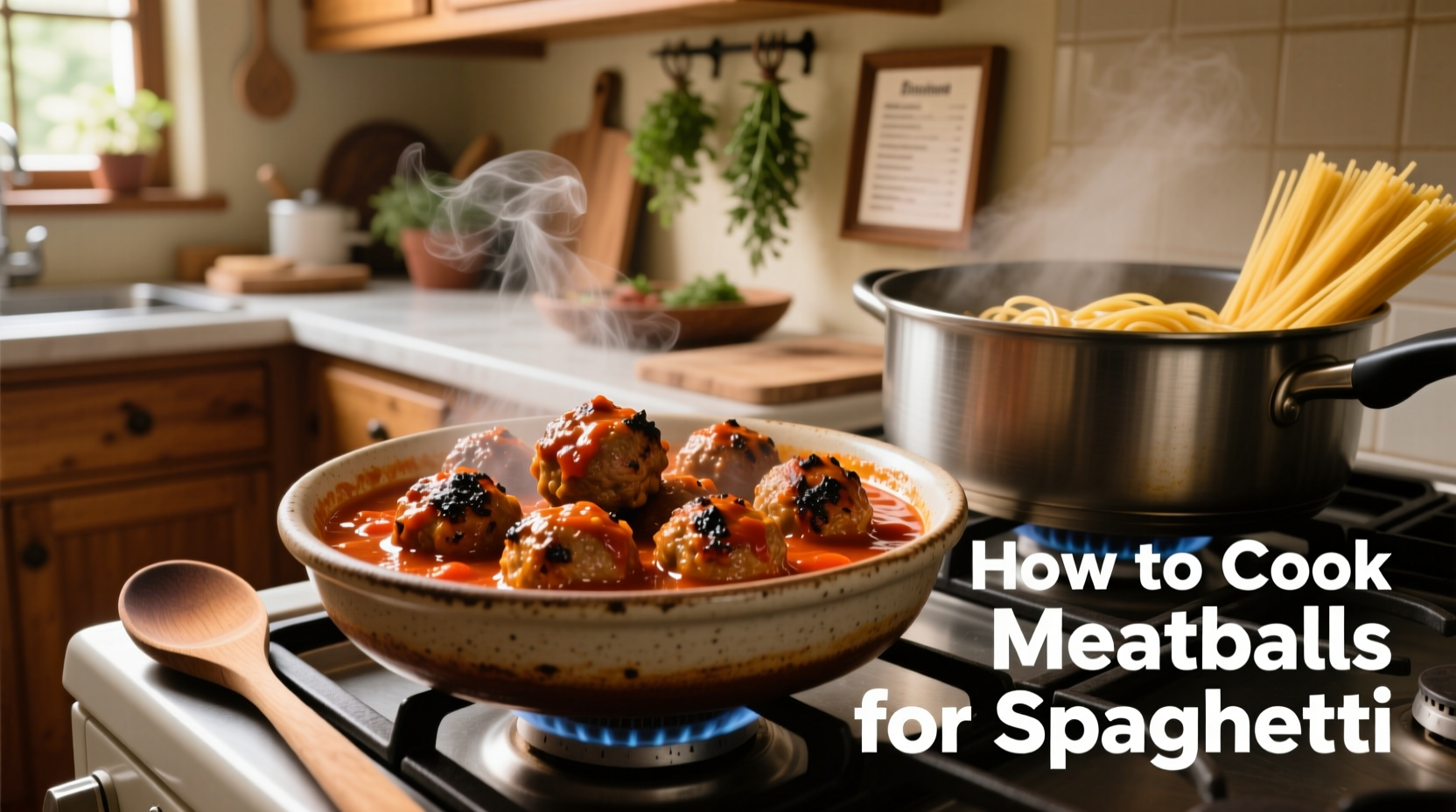Perfect meatballs for spaghetti require a balanced mixture of 70% lean ground beef, breadcrumbs, egg, Parmesan, garlic, and herbs, shaped into 1.5-inch balls and cooked until they reach 160°F internal temperature. For best results, brown them in olive oil before simmering in marinara sauce for 20 minutes to absorb flavors while maintaining tenderness.
Nothing elevates a plate of spaghetti like perfectly cooked meatballs that balance texture, flavor, and authenticity. Whether you're preparing a quick weeknight dinner or hosting a special Italian-themed meal, mastering meatball preparation transforms your spaghetti from ordinary to extraordinary. This guide delivers professional techniques honed from decades of culinary experience, ensuring your meatballs maintain their shape, deliver rich flavor, and complement your pasta perfectly.
What You'll Need: Essential Ingredients and Equipment
Creating restaurant-quality meatballs starts with selecting the right components. The foundation of great meatballs lies in the meat-to-binder ratio and proper seasoning.
| Category | Essential Items | Why It Matters |
|---|---|---|
| Meat Selection | 70% lean ground beef (1 lb) | Provides ideal fat content for juiciness without excess grease |
| Binders | Fresh breadcrumbs (1/2 cup), egg (1) | Creates structure while maintaining tenderness |
| Flavor Enhancers | Fresh parsley (1/4 cup), garlic (2 cloves), grated Parmesan (1/4 cup) | Adds complexity without overpowering meat flavor |
| Equipment | Mixing bowl, cookie scoop, heavy skillet | Ensures consistent shaping and even cooking |
Preparation Timeline: From Mixing to Serving
Understanding the proper sequence prevents common mistakes that lead to tough or crumbly meatballs. This timeline follows professional kitchen practices that maximize flavor development.
| Stage | Time Required | Critical Success Factors |
|---|---|---|
| Ingredient Preparation | 10 minutes | Chill all ingredients before mixing to prevent fat melting |
| Mixing and Shaping | 15 minutes | Handle mixture gently; use cookie scoop for uniform size |
| Cooking | 20-25 minutes | Initial sear followed by simmering in sauce for flavor infusion |
| Resting | 5 minutes | Allows juices to redistribute before serving |
Step-by-Step Meatball Preparation
Mixing the Perfect Base
Combine 1 pound of chilled ground beef, 1/2 cup fresh breadcrumbs soaked in 1/4 cup milk, one lightly beaten egg, 1/4 cup grated Parmesan, 2 minced garlic cloves, 1/4 cup chopped fresh parsley, 1 teaspoon salt, and 1/2 teaspoon black pepper in a large bowl. The USDA Food Safety and Inspection Service recommends keeping meat below 40°F until ready to use to prevent bacterial growth (USDA Meat Handling Guidelines).
Pro Tip: Mix ingredients with your hands just until combined—overmixing develops proteins that make meatballs tough. The mixture should feel moist but hold together when pressed.
Shaping for Consistent Cooking
Use a #40 cookie scoop (1.5-inch diameter) to portion meatballs for even cooking. Gently roll each portion between your palms to create smooth spheres without compacting the meat. Proper shaping prevents the common issue of meatballs that fall apart during cooking.
Cooking Methods Compared
Professional chefs use two primary methods for cooking meatballs destined for spaghetti:
- Skillet Browning (Recommended): Heat 2 tablespoons olive oil in a heavy skillet over medium heat. Brown meatballs on all sides (about 8 minutes total), then transfer to simmering marinara sauce for 20 minutes. This method creates a flavorful crust while allowing meatballs to finish cooking gently in the sauce.
- Baking Alternative: Place meatballs on a parchment-lined baking sheet and bake at 400°F for 18-20 minutes until internal temperature reaches 160°F. While this method requires less attention, it lacks the flavor development from stovetop browning.

Sauce Integration: The Secret to Flavorful Meatballs
The critical step many home cooks miss is properly integrating meatballs with sauce. After browning, gently place meatballs in simmering marinara and cook uncovered for 20 minutes. This allows flavors to meld while preventing the meatballs from becoming waterlogged. As noted in culinary research from the Culinary Institute of America, "simmering meatballs in sauce for less than 15 minutes results in disconnected flavors, while over 30 minutes can break down texture" (CIA Culinary Research).
Common Problems and Solutions
Even experienced cooks encounter issues with meatball preparation. Here's how to address frequent challenges:
- Meatballs falling apart: Increase binder ratio slightly (add 1-2 tablespoons more breadcrumbs) or ensure ingredients are properly chilled before mixing
- Dry texture: Use a higher fat content meat (70% lean) or add 1-2 tablespoons olive oil to the mixture
- Overpowering garlic flavor: Use roasted garlic instead of raw for a milder, sweeter taste
- Sauce too thin after cooking: Remove meatballs temporarily and simmer sauce uncovered for 5-10 minutes to reduce
Serving and Storage Recommendations
For optimal spaghetti presentation, place a small portion of sauce on the plate first, add cooked spaghetti, then arrange 3-4 meatballs on top with additional sauce. Garnish with fresh basil and extra Parmesan.
Store leftovers in an airtight container with sauce for up to 3 days in the refrigerator. When reheating, gently warm meatballs in sauce over low heat to maintain texture—microwaving often makes them rubbery. For longer storage, freeze uncooked portioned meatballs on a baking sheet, then transfer to freezer bags for up to 3 months.











 浙公网安备
33010002000092号
浙公网安备
33010002000092号 浙B2-20120091-4
浙B2-20120091-4